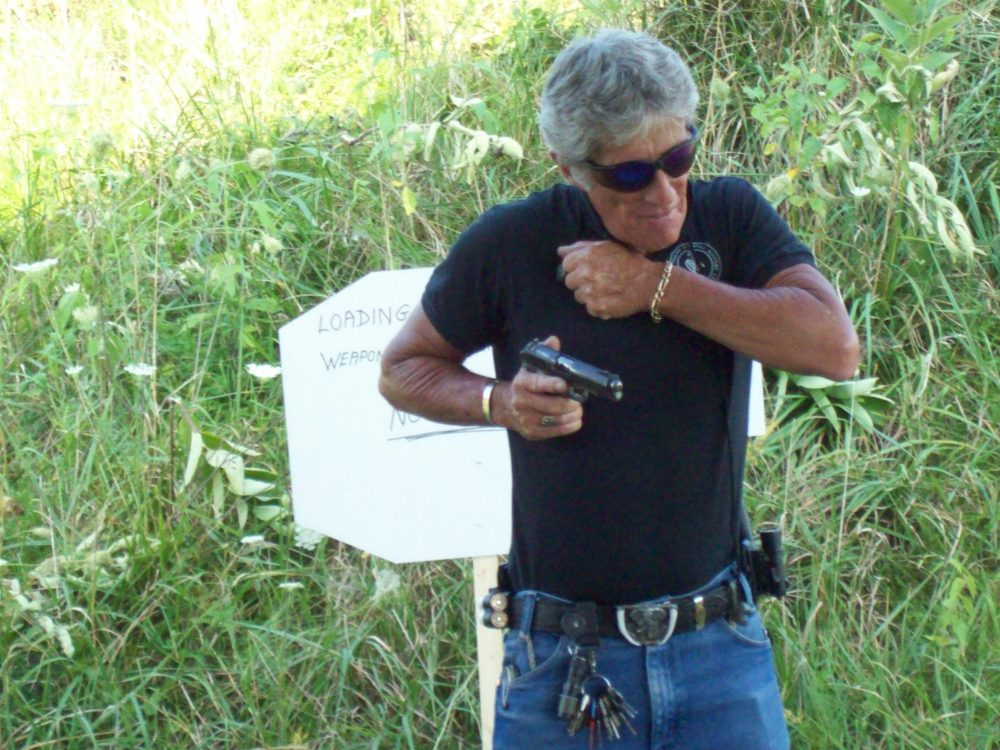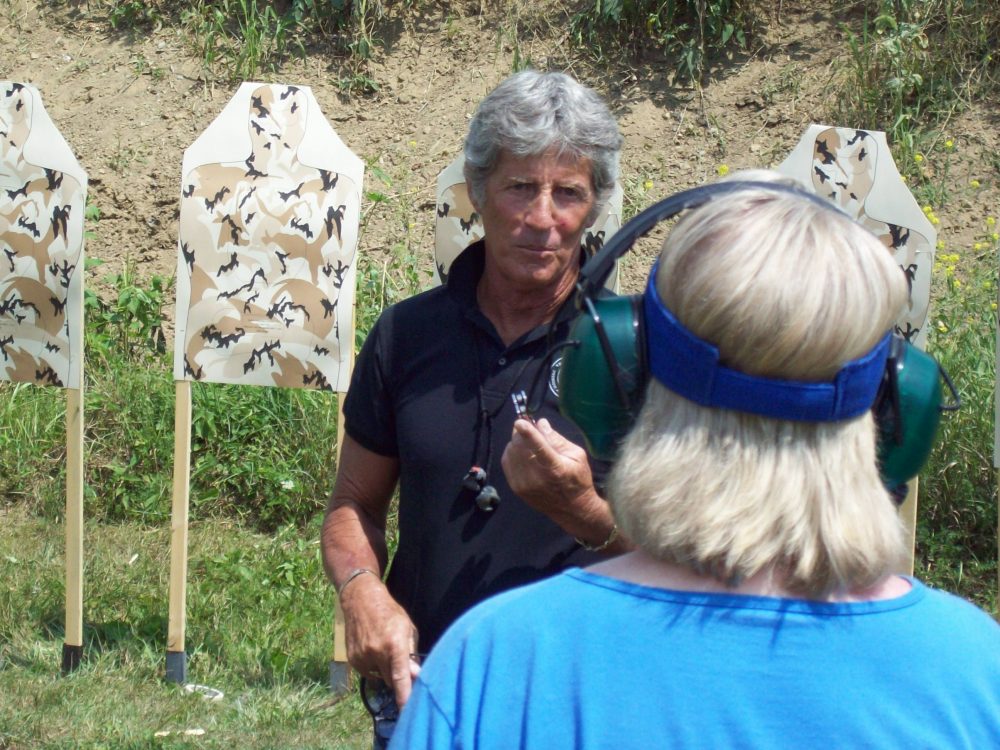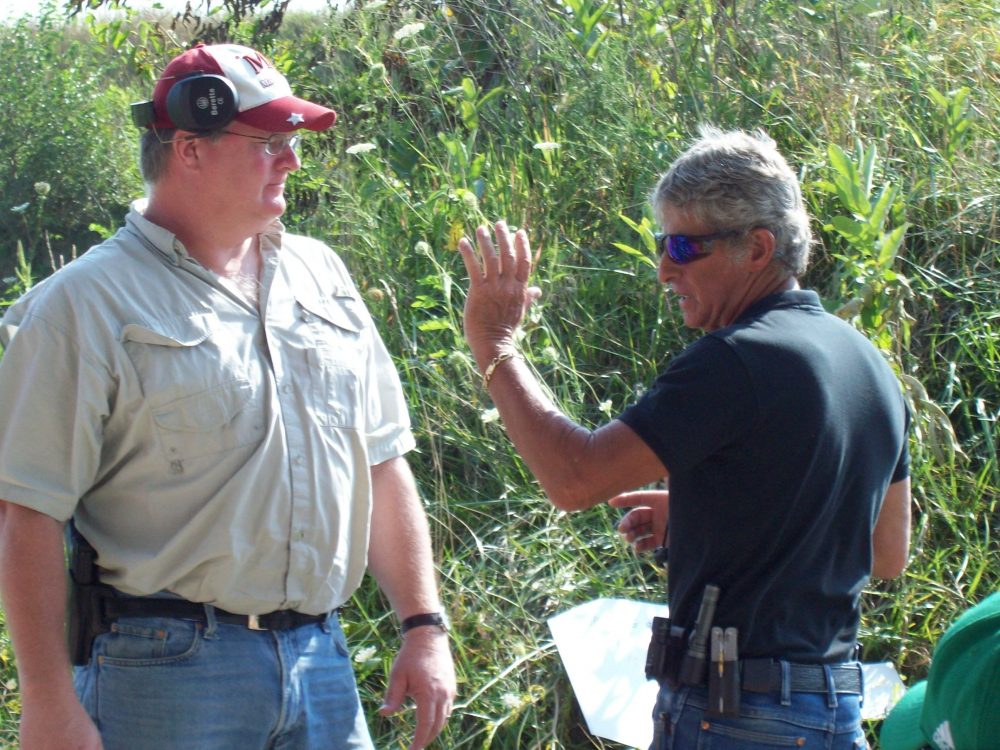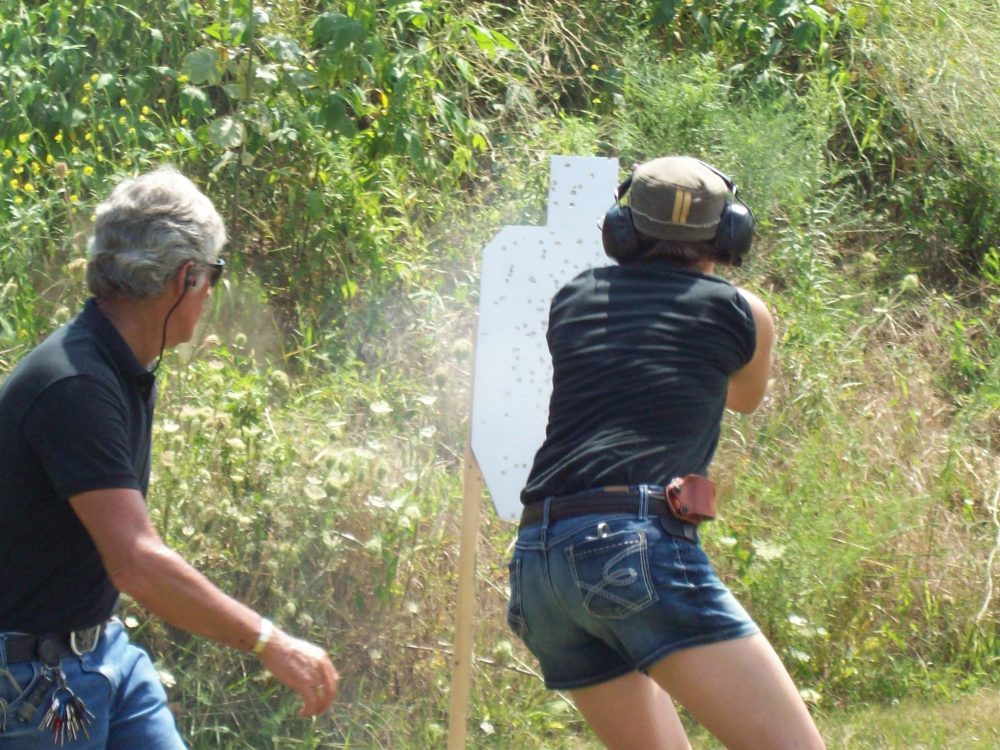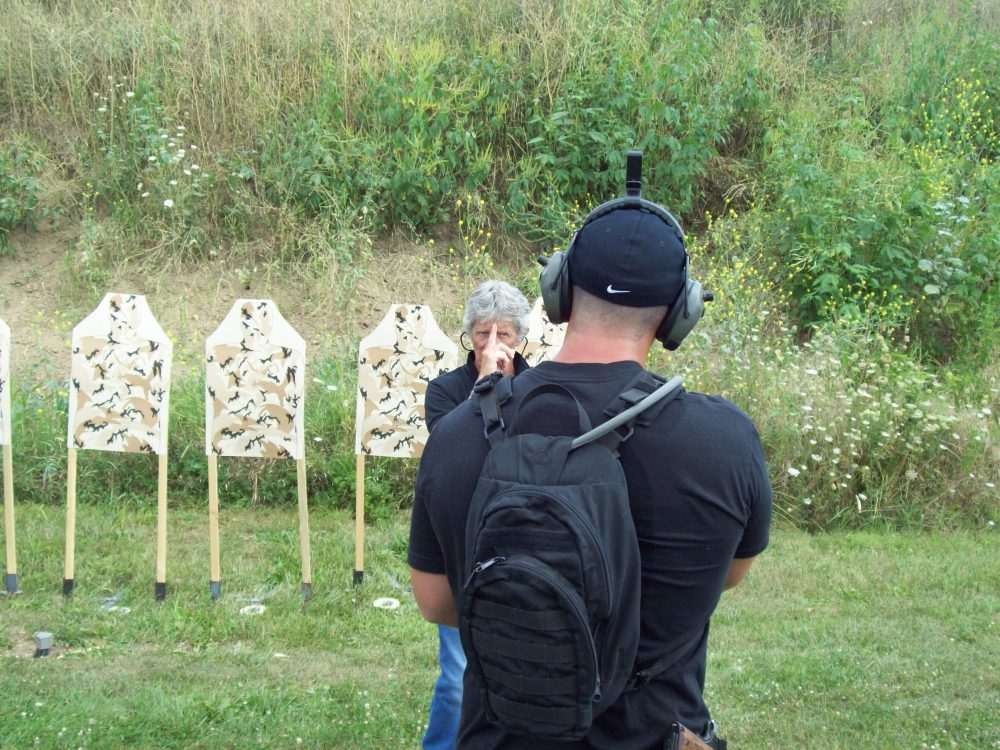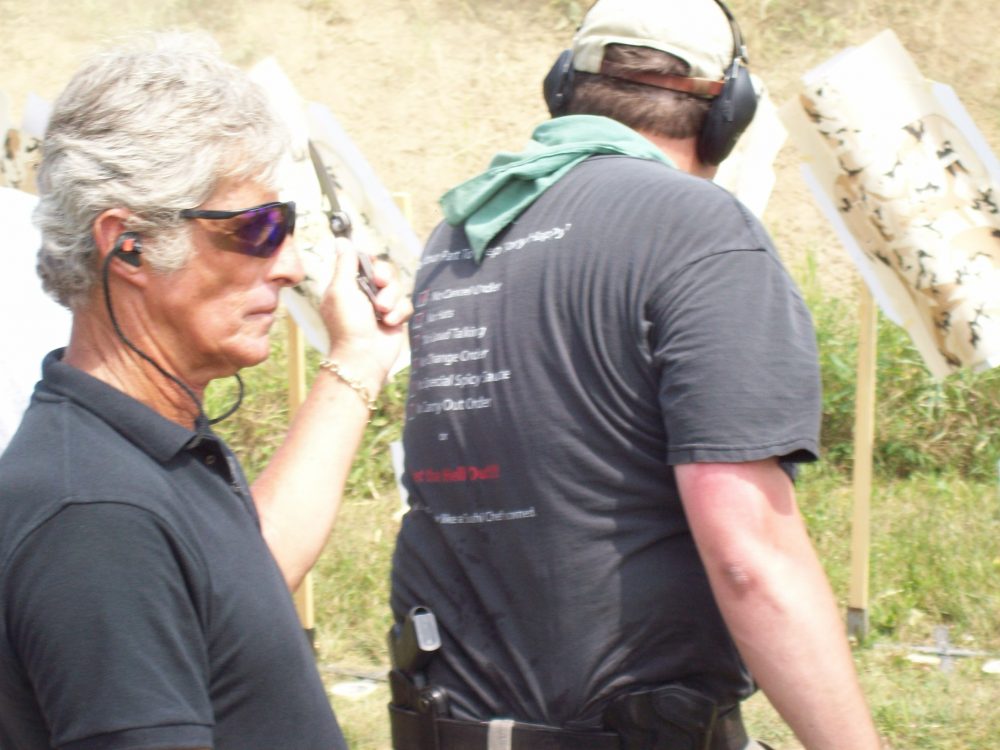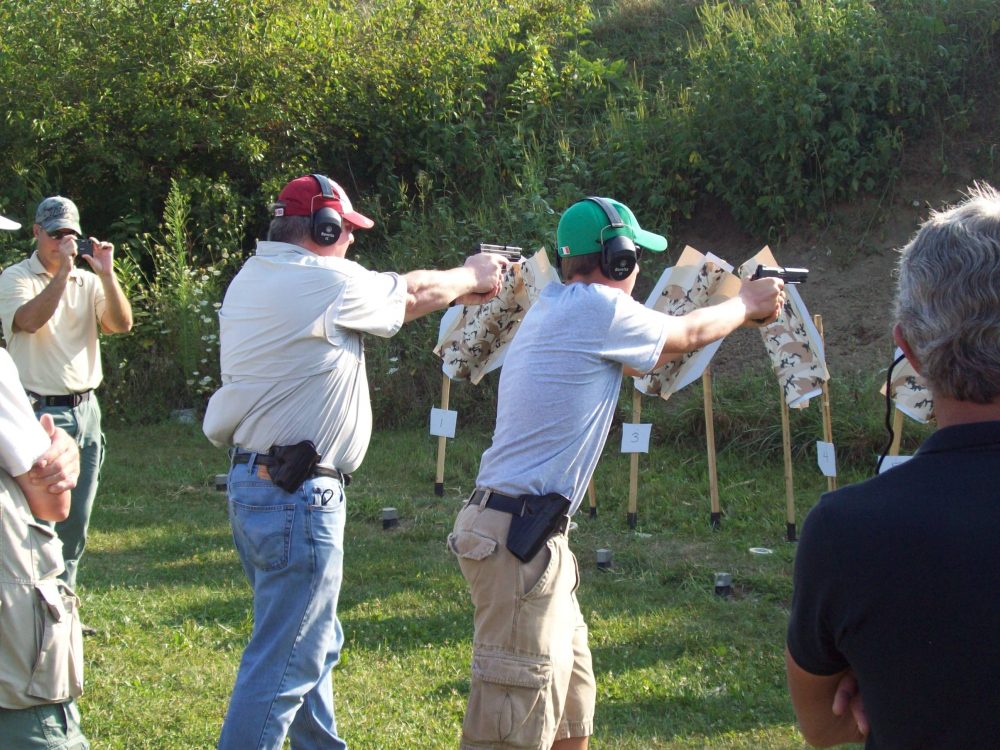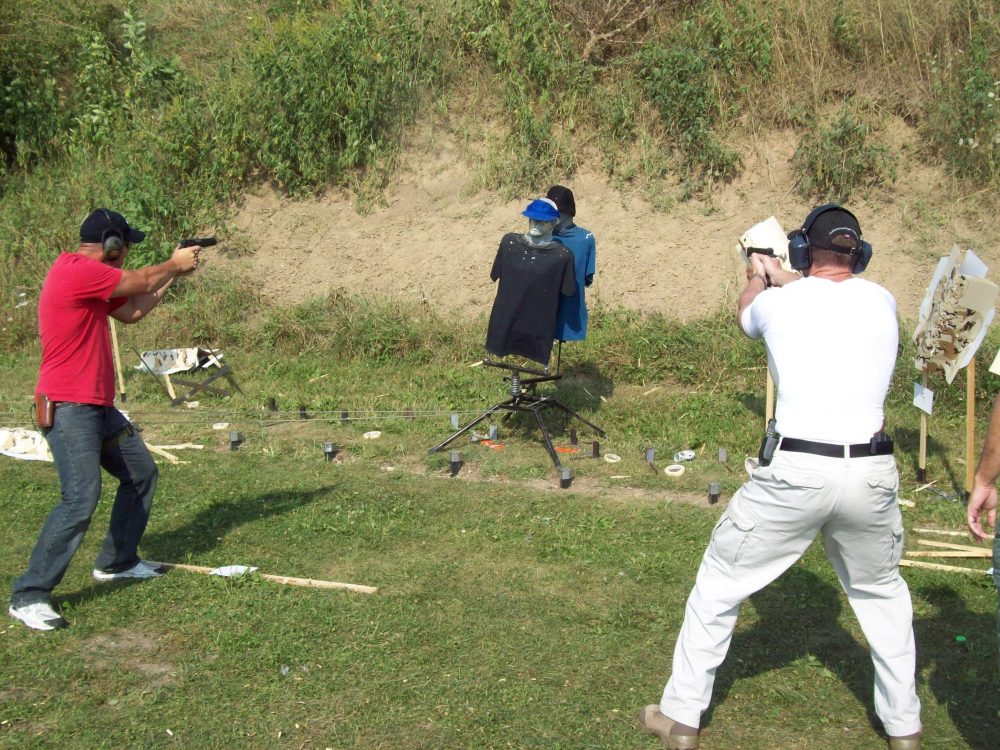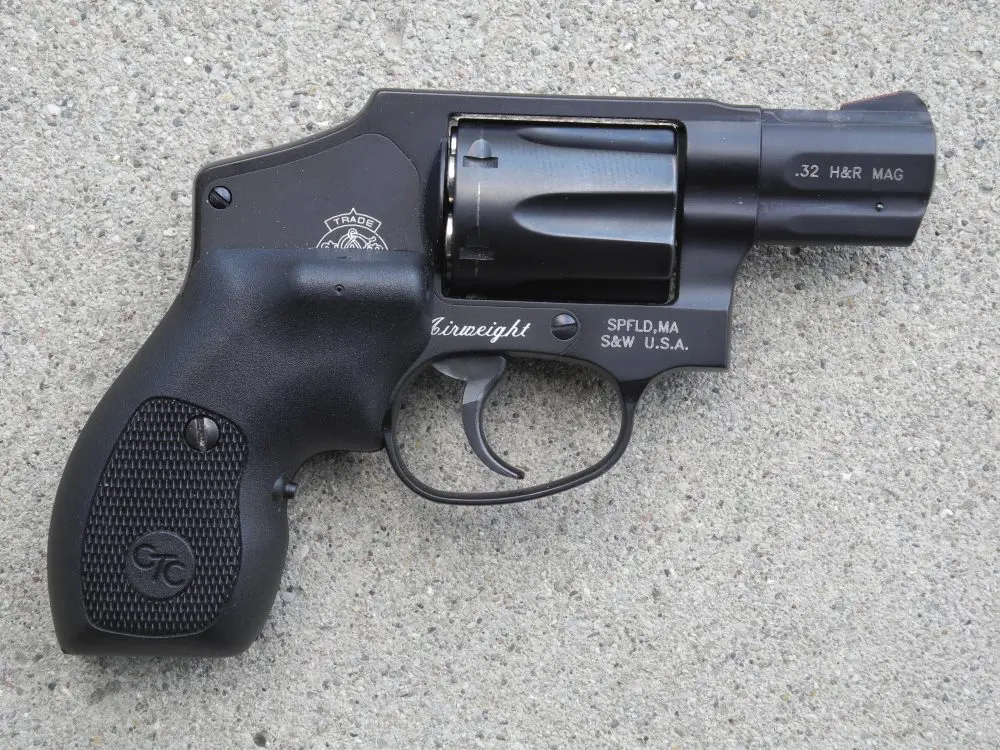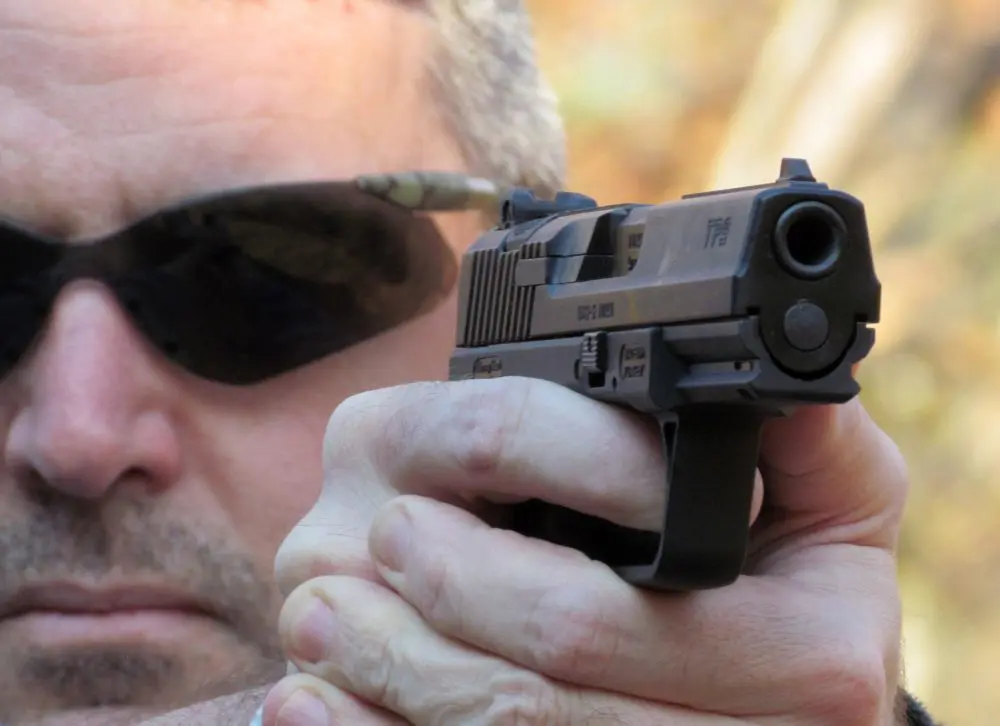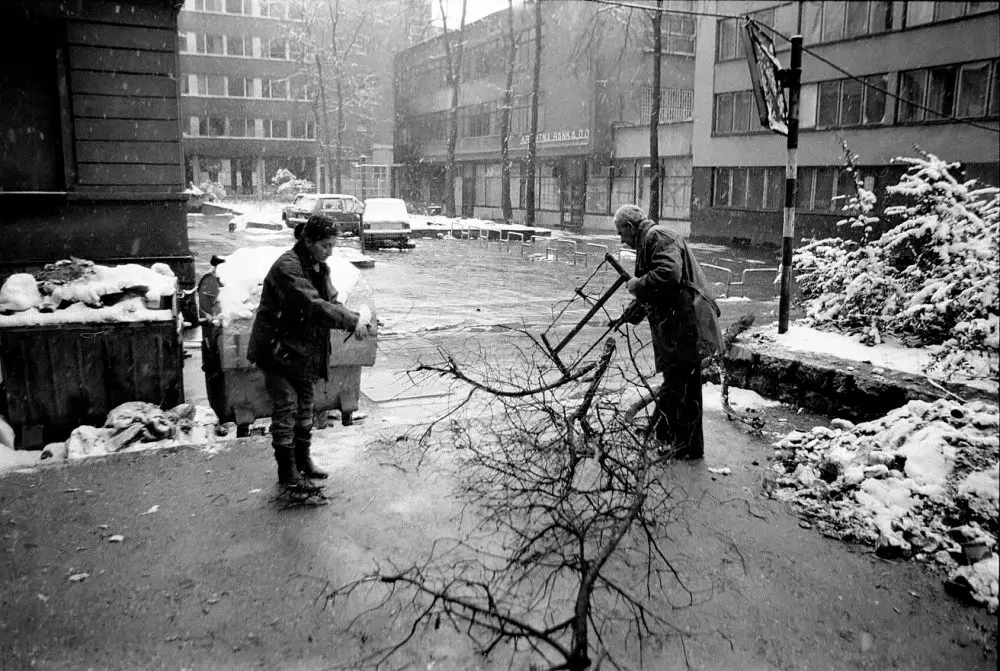When it comes to safety, Awerbuck is all business.
Every August since the early 1990s, Louis Awerbuck, Lead Instructor for Yavapai Firearms Academy, Inc., has come to the Boone County Sheriff’s Office in Indiana to teach handgun, shotgun, and carbine classes. His students span the spectrum from military and peace officers to vetted citizens.
I first met Louis in 2002 at one of his carbine classes. My Dad had brought me along to the class to survey the course. Louis asked if we had a spare carbine and ammunition. As we did, he invited me to shoot rather than simply observe for the next three days. What an experience for a 14-year-old! The next year I eagerly returned to Boone County for Sheriff Ken Campbell’s Defensive Handgun Class and then Louis’ Tactical Handgun – Stage 1.
My Dad and I also began annual Carbine Operator Courses with EAG Tactical, Inc. in 2003. Since then, most of my training focus has been on the carbine, to the detriment of my pistol skills. I also recently made the switch from my venerable Colt 1911 to the Glock 19.
Changing to a slightly different weapon system, along with deteriorating pistol skills, led me to go back to Louis for a refresher in the basics.
Louis demonstrates rocking pistol from concealment into retention position after first simulating pulling up his cover garment.
My class was composed of cops (active or retired) and private citizens. There were five women and 19 men, including one father and son, one father and daughter, and two married couples.
This year I used two third-generation Glock 19 pistols for the class, shooting predominately right-handed. In addition to the usual class gear (ammunition, magazines, notepad, replacement parts, etc.), I also brought along my Dad. He was the resident photographer, water carrier, and magazine fairy (sans tutu). I highly recommend his services, but in the interest of keeping the business in the family, I’m afraid I will be unable to divulge his pay grade. You’ll have to find your own.
Table of Contents
TRAINING DAY 1
Louis began the class with a handout and discussion of The Four Safety Rules. Students would be invited to leave if they were unsafe.
“What is a gunfight?” asked Awerbuck. “Sights and trigger. It’s simple. Stare at the front nubby thing and pull the curvy thing back and forth.” His goal is to give information a student can use to fight and win if it ever becomes necessary. “The next shot you shoot after this class may be someone trying to kill your family inside your home.
“This class is about shooting people who need to be shot.” Using students, he showed that the average male torso, regardless of height—since the difference in height comes from the legs—is 18 inches high and nine inches across, nipple to nipple. This area is the location of the vital organs, where bullets need to go to de-pressurize the body. For women, the average target area is smaller: 14 inches high and nine inches across. Our initial goal would be four-inch groups between the nipples.
Awerbuck demonstrates one of a variety of different strikes with support hand while reaching for pistol in close-range encounter.
“Sight picture is the superimposition of sight alignment on the target.” Sight picture is critical before, during and after taking the shot, especially the last shot on the last day. And the first shot you might have to take in a real fight.
Trigger control consists of:
- Take up all the slack.
- Stroke the trigger.
- Reset the trigger (keep the finger on the trigger, run it forward, and take up the slack).
Louis advocates immediately resetting the trigger after breaking the shot—that is, maintaining solid contact with the trigger and controlling its forward motion rather than allowing the trigger spring to drive the reset. Louis told us that trying to feel the trigger reset is bovine excrement. “You will not ease to reset in the street.
“Don’t think one shot. Ever.” Why not? “When the gun goes bang, the bullet is still in the barrel.” To make certain it goes where we are aiming, we need to quickly regain sight picture. Practically, Louis said, “Lie to yourself that you will take another shot and believe the lie.” This is follow-through.
He made a few remarks about fighting stance. “This will take 13 seconds. Weaver, Isosceles? Who gives a damn? When someone comes in your house, you grab your two-year-old to protect him, and you start shooting. What stance is that?” Balance is ultimately the key. Louis noted this is especially true for women and taller men.
Awerbuck then had shooters with problems they would admit explain them to him. Louis would address correcting them in class to save time on the line. We broke for lunch. Louis had taught for three hours.
Shooting and moving to the rear in close-range encounter.
We were divided into two relays. One relay shot while the other stood behind the first. They were asked to observe as Louis diagnosed shooters’ problems. This helped the off relay learn not only from hearing, but seeing as well.
Our first shots fired were on flat targets. Our goal was four-inch groups. Later, Awerbuck would bring us back to shooting four-inch groups whenever we began to lose focus.
Once he was satisfied that we could hold a good group, he introduced the drawstroke. This was slightly different from what I had learned back in 2003. It is now:
- Grip: in the holster, take the firing grip with which you will live or die.
- Rock: extract the pistol and smoothly rotate to the retention position.
- Smack: move the support hand across the body, under the gun, and attain a proper two-handed grip.
- Look: push the gun out and attain sight picture.
- Press: stroke the trigger and follow through.
Previously, the second step was clearing the pistol from the holster with a pause before rocking and locking into the retention position. Louis declared, “If you shoot yourself in the ass, I will shoot you in the head.” This is a Rule #2 issue. “Never let your muzzle cover anything you are not willing to destroy.”
When an otherwise good shooter’s shots consistently went left, Louis suggested change in shooting glasses. A bad lens was at fault.
Louis worked with each individual’s carry style. The holsters ran the gamut from duty and inside the waistband to even a purse and fanny pack carrying system. Aside from ensuring everyone was safe in their weapons handling, Louis let people practice with their everyday holsters. The two cross-draw systems (the girl with the purse gun and the left-handed woman with the fanny pack) were put at either end of the relay to ensure muzzle coverage remained clear. We finished the day drawing and shooting.
TRAINING DAY 2
Gone were the large flat targets. They were now curved, and the eight-inch target had shrunk to about six inches. They were also angled off the vertical. Anything outside the curved portion of the target was essentially a miss. This approximated the high degree of accuracy needed to get an incapacitating hit in a real gunfight. Louis then added lateral movement, alternating between body and head shots.
On one occasion, when groups fired by both relays were becoming unacceptable, Louis took us back to 20 yards. Each student shot from the low ready on a 16-ounce can placed on the berm. Most got hits or near misses. We were capable of good, accurate hits. We were simply over-thinking the problem. “Don’t try to shoot too accurately. This is the one thing you don’t have to get perfect at. If you try to shoot 100 percent, you’ll only shoot 50 percent.”
Louis covered malfunctions for different weapons. This alone was worth the price of admission.
Your gun is no longer functioning in a situation where you need it. Louis stated that panic is an acceptable first response. Then tap the magazine, rack the slide and roll the gun to the right, so gravity will help pull whatever is in the chamber down to earth. Then get back on target and assess. He noted, however, that in applying this method, there is a chance you may unconsciously induce a worse malfunction (double feed) if the case does not fall from the gun.
Shooter who had habit of checking his six to the right rear would see a knife blade a foot from the left rear side of his head.
Malfunction clearances take anywhere from two to eight seconds to finish, depending on the weapon. Eight seconds is a long time to bleed. Louis’ solution? “Always carry two guns.” Drawing another pistol is often the quickest malfunction clearance (or reload). Louis notes that if a malfunction occurs inside seven yards, it may end up as a fistfight. Be prepared. Louis remarked, “I’m going to run out of blood before I run out of ammunition.”
Flashlight techniques were covered in depth: Harries, Rogers, SureFire, and FBI. “If you cannot see, you should not shoot.” Rule #4. “Look at the sights, not the light.” As in daylight, the eye can only focus in one plane. Louis suggests familiarity with at least two techniques, as one technique is not viable in all situations. He also stressed carrying two lights for those times when Mr. Murphy visits.
We finished the day shooting with the flashlight, first from the ready position, then with the drawstroke, and finally from the holster with movement.
Father and son compete in shoot-off.
TRAINING DAY 3
After a warm-up and once he was satisfied we could deliver the desired hits, Louis angled the targets, moving the frames 30 to 45 degrees left or right off the line of sight. The idea is to mimic shots on someone above or below the shooter, e.g., a person leaning in or lying prone. Depending on the direction of movement, your target would either grow larger or shrink. Accuracy, as always, was paramount.
Man-on-man drills emphasizing smoothness and accuracy over speed were conducted. Louis had the class shoot strong hand unsupported and weak hand unsupported. Weak hand draws were not covered as they had been in my first class. When I queried Louis about this, he said, “While my lesson plan stays 95% the same for every class, I mix and match target systems relative to what I perceive at any given time during a class will give the optimum trainee benefit at that specific stage of the course.”
Louis then introduced us to close-range work.
The shooter would stand in front of the target, with Louis and Sgt. Brian Stevenson on either side for safety. On command, the student would either strike and draw or just draw and fire from retention. Then he would begin to move laterally, diagonally, or straight back, all the while firing. The progression was shooting from retention, to shooting with slide/frame sight picture, to firing with a normal sight picture as the range opened.
The student continued to move and shoot until Louis ended the drill. If you ran out of ammunition, you speed loaded on the move and finished the drill with a brain shot. I finished the drill with three or four rounds left in my magazine. Most 1911 shooters shot to slide lock and had to reload. No one knew how many rounds had been fired.
The class ended with the movers: Yavapai Firearms Academy’s Mirage Target system. Arguably, the entire three days were spent preparing the students for this last drill.
Final exam required one good shot. Sights, trigger control and follow through were the keys.
The drills consisted of one bad guy and one to three innocents. The students were paired. Each pair ran both drills twice, once on the left and once on the right. The goal of the drills was for the partners to move left and right to a position where one could put a bullet in the brain of the moving bad guy without hitting an innocent.
“Hmm, I’ve done this before,” I said to myself. However, back then the bad guy had cunningly placed the innocents between himself and the shooters. This left the shooters with two choices: maneuver on either side to clear the innocents or thread the needle between their heads. Louis had managed to improve his technique while I’d been away. Now the bad guy was in front of the good guys. Any low brain or body shot would hit the innocents behind him.
“OK,” I thought, “I can still do this.” Then came the kicker: Louis told me to shoot left-handed. I stared at him for a moment. Was he crazy? I had shot the entire class right-handed, aside from a few transitions when I ran my Glock dry. But there was only one response I could make: “Yes, Louis.” I holstered and then drew my backup Glock. All I remember is sight picture, pressing the trigger, and acquiring another sight picture.
I got the hit. On each drill.
CONCLUSION
Louis teaches students not only to shoot, but also to think. Seldom will an attacker stand belt buckle to belt buckle and exchange fire with you. Sights, trigger and follow through: Louis covers them all. He then gives you the opportunity to employ them under his watchful eye. Finally you do it alone and under pressure on the last day.
“What is an advanced gunfight? Sights and trigger.” In just three days.
I highly recommend this course for the novice or advanced shooter.
SOURCE:
Yavapai Firearms Academy, Ltd.
Dept. S.W.A.T.
P.O. Box 27290
Prescott, AZ 86312
(928) 772-8262
www.yfainc.com
